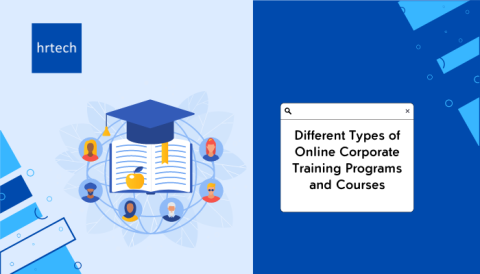HRIS systems are crucial for global human resource management, encompassing a range of functionalities including database management, automation of manual processes, performance evaluation, and advanced reporting. These software solutions are increasingly incorporating AI and machine learning, enabling organizations to automate routine tasks and make data-driven decisions about their workforce.
In today’s digital landscape, global HRIS systems are vital for efficient HR process management, offering centralized data, enhanced reporting, and global compliance assurance. This is essential for organizations operating across multiple countries, where managing diverse legal and cultural HR requirements is crucial.
Why Do Companies Need To Follow Best Usage Practices for HRIS Systems?
Without fully leveraging HRIS, companies risk inefficiencies and compliance issues due to uncentralized and inaccurate data management. This can result in disjointed HR procedures, compatibility issues with other tools, and a lack of streamlined processes for essential HR functions like payroll and benefits administration. Furthermore, it can impede the ability to manage a global workforce effectively.
Best Usage Practices For HRIS Systems:

- Good Data Hygiene: Maintaining accurate and updated data is crucial for the effective use of HRIS systems. Organizations should ensure that employee data is entered correctly and updated regularly to avoid errors and inconsistencies.
- User Training: Proper training is necessary for employees to use HRIS systems effectively. Organizations should provide comprehensive training to all users, including HR professionals, managers, and employees, to ensure that they understand the system’s features and functionalities.
- System Integration: HRIS systems should be well-integrated with other company systems for seamless operations. This includes integrating with payroll, benefits administration, and time and attendance tracking systems to ensure that data is consistent and accurate across all systems.
- Regular Audits: Regular check-ups are essential to keep HRIS systems functioning optimally. Organizations should conduct regular audits to identify and address any issues with the system, such as data inconsistencies or security vulnerabilities.
- Secure Accessibility: Secure access is crucial, especially for global teams. Organizations should ensure that HRIS systems are accessible only to authorized users and that data is protected with robust security measures, such as encryption and access controls.
By adhering to these practices, organizations can maximize the utility of global HRIS systems in streamlining HR processes, ensuring data centralization and compliance, and enhancing decision-making capabilities.
Real-world Examples Of Best HRIS Practices:
Several companies have successfully implemented best usage practices for global HRIS systems. For example, Darwinbox, a global HRIS provider, offers a comprehensive solution that streamlines HR processes, centralizes employee data, enhances reporting, and ensures global compliance. Another example is Rippling, which provides a centralized platform for teams around the world to store and access all HR-related data and enables effective collaboration between employees in different countries.
The impacts and outcomes of these best practices on company growth and employee satisfaction. Implementing best usage practices for global HRIS systems can have a significant impact on company growth and employee satisfaction. By maintaining accurate and updated data, providing proper training, ensuring system integration, conducting regular audits, and ensuring secure accessibility, organizations can streamline HR processes, improve decision-making, and enhance communication and collaboration. This can lead to increased efficiency, reduced administrative burden, and improved employee satisfaction.
Things To Avoid While Using HRIS:
It’s important to avoid common mistakes and pitfalls that can hinder its effectiveness like inadequate data hygiene, insufficient user training, poor system integration, infrequent audits, and insecure accessibility. Failing to address these aspects can lead to data inaccuracies, inefficiencies, and security vulnerabilities, ultimately impacting the system’s ability to streamline HR processes, centralize employee data, and ensure global compliance.
Conclusion:
Follow the best usage practices for global HRIS systems as it is crucial for organizations to streamline HR processes, centralize employee data, enhance reporting, and ensure global compliance. Good data hygiene, user training, system integration, regular audits, and secure accessibility are some of the best usage practices that organizations should follow to maximize the benefits of their global HRIS systems.
If you need more personalized advice or consultation relating to HRIS systems, feel free to get in touch with experts in the field. They can provide you with tailored solutions that meet your specific needs and goals. This can lead to increased employee satisfaction and organizational growth.
Frequently Asked Questions:
What is the purpose of automating the system?
Automation in HRIS streamlines the HR processes, enhances efficiency, reduces errors, and provides quick access to data for better decision-making.
How do you decide which modules to implement first?
Prioritize modules based on the organization’s immediate needs and goals, typically starting with core functions like payroll and employee data management.
How will implementing HRIS change the job processes?
HRIS implementation automates routine tasks, leading to more efficient and data-driven HR processes, and shifts the HR staff’s focus to strategic initiatives.
How do you ensure data accuracy and integrity in HRIS systems?
Regular data audits, strict data entry protocols, user training, and implementing features that flag data inconsistencies help maintain data accuracy and integrity.
How do you assess and address user needs and system requirements?
Engage with stakeholders to understand their needs, focusing on functional requirements, usability, compliance, and system integration.
How do you ensure data privacy and compliance with data protection regulations in HRIS systems?
Stay updated with data protection laws, implement strong security measures, regularly review privacy practices, and train users in data privacy.





